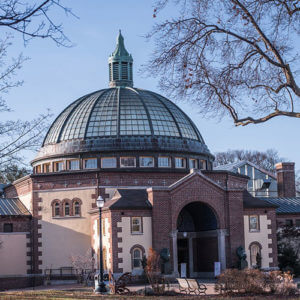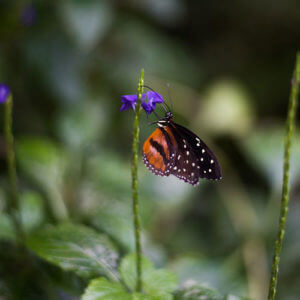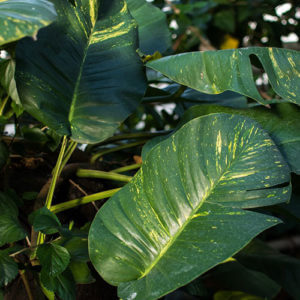Finding plant inspiration at the Detroit Zoo
When the Detroit Zoo opened in its current Royal Oak location in 1928, it was the first zoo in the country to have animal exhibits without bars. Two of its most interactive exhibits to this day are the butterfly garden and free-flight aviary. Housed separately in one building, visitors will find hundreds of butterflies and 20 different species of birds, respectively.

Detroit Zoo Butterfly garden and free-flight aviary.
In the 1990s, our professionals at Planterra had the honor of installing the butterfly garden. Over the years, grounds keepers have called on us to provide interior landscape arborist services for both the butterfly garden and the aviary. Planterra is more than Detroit’s office plant provider, we continue to play role in the history of the Detroit Zoological Society.
Upon entering the butterfly atrium visitors will notice that the temperature is kept at balmy 75 degrees. This temperature is optimal for butterflies to fly. It also gives the plants an excellent tropical environment in which to flourish.

250 new butterfly chrysalises are brought in, hatched, and released into the butterfly garden each week.
Butterfly experts understand that caterpillars can only eat one or two species of plants to survive, therefore butterflies will only lay their eggs on those plants. With this knowledge, Planterra staff selected plants for the butterfly garden meant to discourage the butterflies from laying eggs. Instead, 250 new butterfly chrysalises are brought in, hatched, and released into the butterfly garden each week.
Among the plants thriving at the butterfly house and aviary is Epipremnum Aureum, also known as Golden Pothos. Originally, Pothos could only be found on Mo’orea, an island in the Pacific Ocean and part of French Polynesia. Now the plant can be found wild in many tropical locations all over the world. The long-growing vines on Pothos reach up to 70 feet long when they are in filtered light and when temperatures remain between 70 and 90 degrees with high humidity. These vines can climb using aerial roots that attach to wooden structures like tree trunks.
It’s possible to bring this plant from the beauty of the butterfly garden and aviary into daily life, too. Pothos has become a popular houseplant and office plant over the years because it can handle all types of light. It is an excellent plant to use in any area of your home or office that doesn’t get a lot of sunlight. It can thrive even when only exposed to florescent lighting.
Another reason for its popularity is its versatility. Pothos can be grown as a cute tabletop plant, climb a totem or trellis, thrive as ground cover in an atrium, or trail down from a hanging container. Pothos creates a healthier environment by purifying the air and increasing humidity. It’s a fit for nearly any space.
____

Nicole Tafoya has been a Horticulture Technician at Planterra in the Detroit area since 2018. As someone who has turned her house into an indoor jungle, she loves bringing the beauty of plants to others.
Speak with a Planterra expert today.


